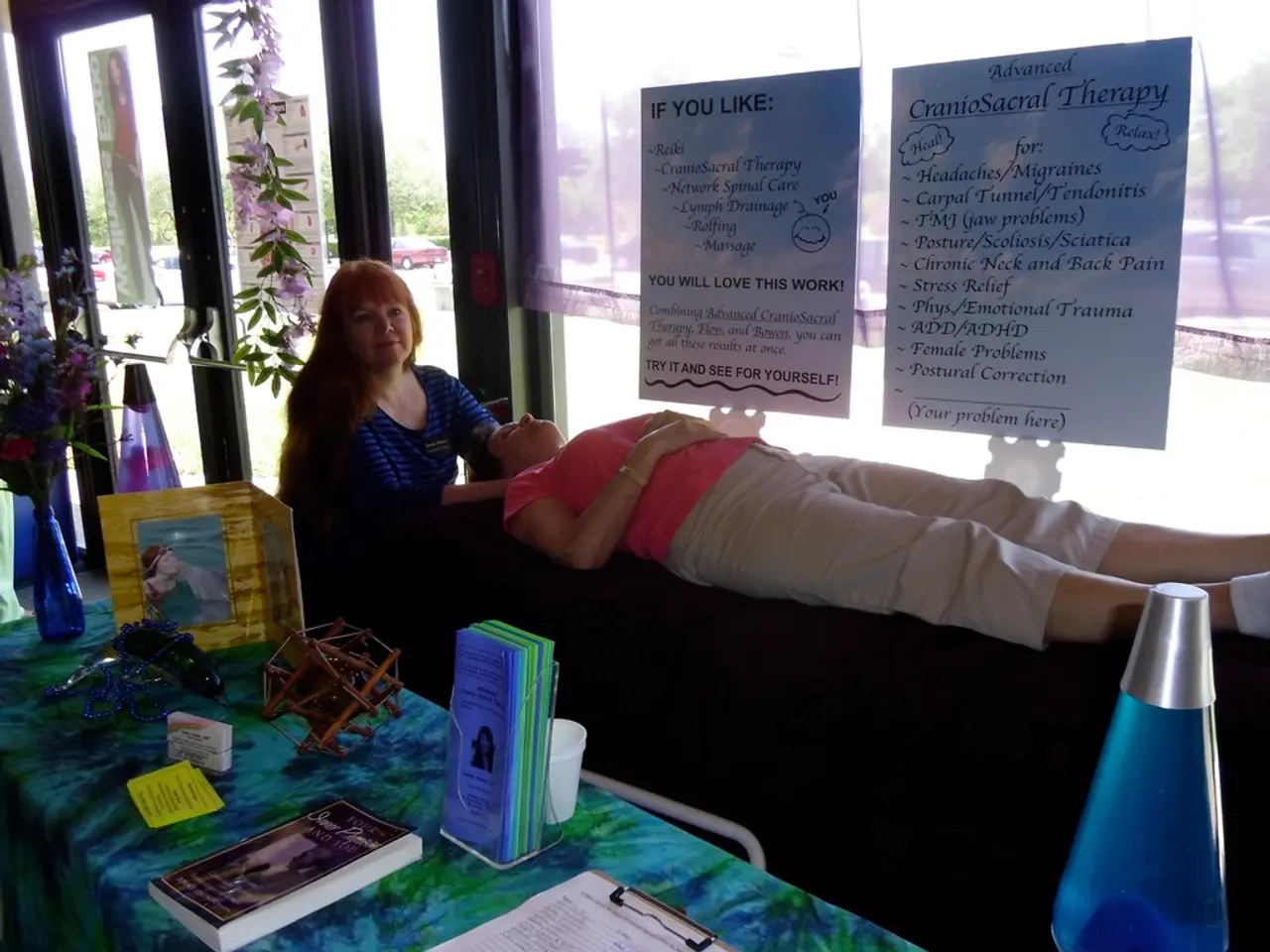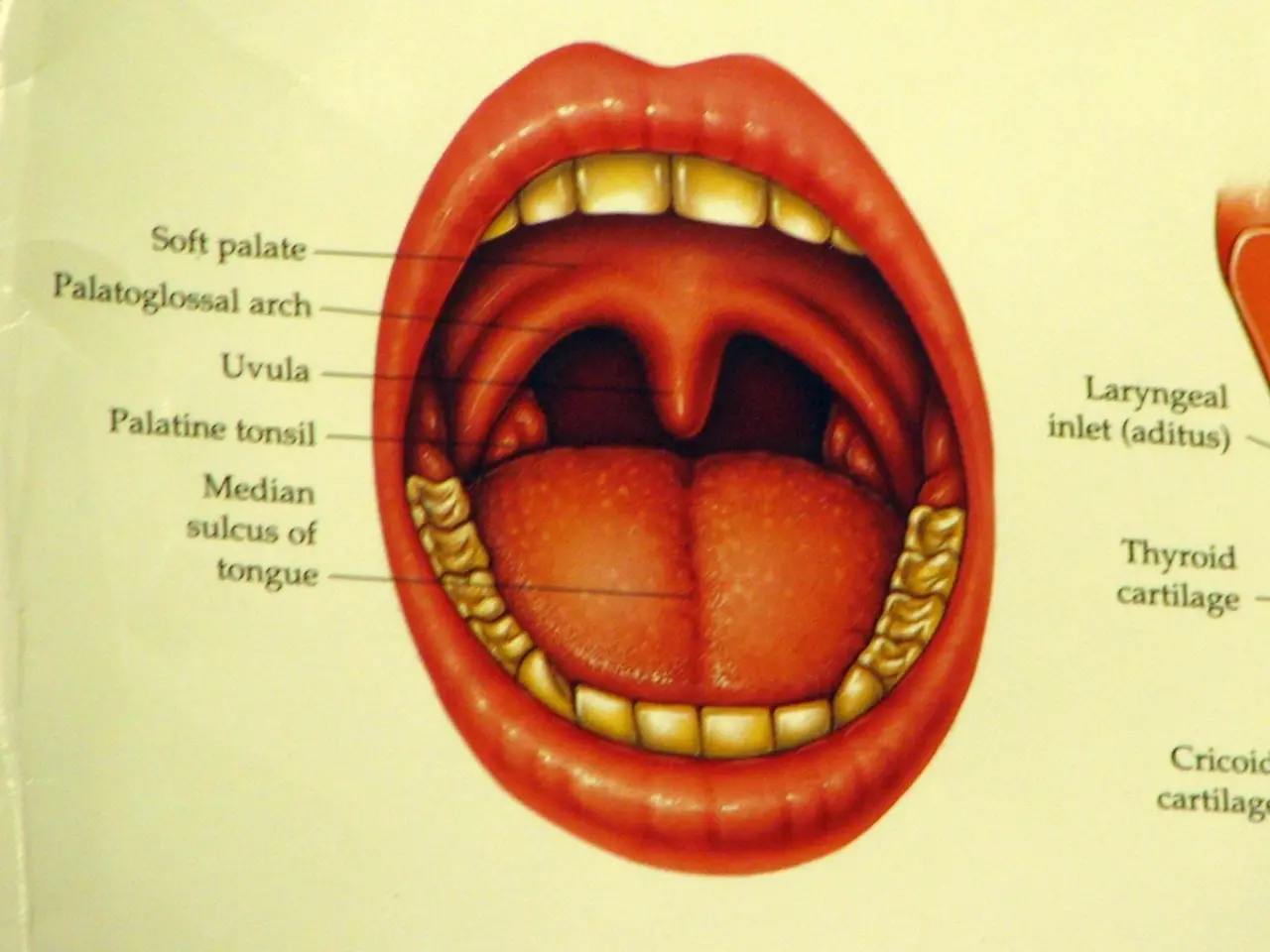Distinguishing Anxiety from Depression: Crucial Differences and Effective Treatment Methods
Navigating the labyrinth of mental health disorders can be as daunting as it is essential. Two commonly misunderstood conditions are anxiety and depression, both impacting millions worldwide. These disorders exist independently but share some similarities, creating a complex emotional landscape that affects individuals from all walks of life.
Anxiety is characterized by excessive worry, fear, and nervousness, often triggered by ambiguous future situations. Physical reactions such as heart palpitations, sweating, and restlessness are common. Depression, on the other hand, involves persistent feelings of sadness, hopelessness, and a reduced interest in previously pleasurable activities.
It's crucial to recognize the differences between these two conditions, not just for those suffering from them, but also for their loved ones and mental health experts. Early and proper diagnosis can pave the way for effective treatment, making a significant difference in managing these conditions.
This comprehensive guide aims to demystify these conditions, providing insight into their causes, symptoms, and treatment options.
Understanding Anxiety and Depression
Factor
Anxiety
Anxiety
Anxiety is a natural response to stress or danger, often referred to as the body's "fight or flight" mechanism. However, when anxiety becomes excessive, persistent, and interferes with daily life, it may indicate an anxiety disorder. Common symptoms include:
Depression
- Excessive worry or fear
- Restlessness or feeling on edge
- Rapid heartbeat or palpitations
- Shortness of breath
- Sweating and trembling
- Difficulty concentrating
- Sleep disturbances
- Muscle tension and headaches
There are several types of anxiety disorders, including generalized anxiety disorder, panic disorder, social anxiety disorder, phobias, obsessive-compulsive disorder, and post-traumatic stress disorder.
Primary Emotion
Depression
Fear, worry
Depression is a mood disorder that affects how a person feels, thinks, and handles daily activities. It's characterized by persistent feelings of sadness, emptiness, and hopelessness. Common symptoms include:
Sadness, hopelessness
- Persistent sadness or emptiness
- Loss of interest in previously enjoyable activities
- Fatigue and low energy
- Difficulty sleeping or oversleeping
- Appetite changes and weight fluctuations
- feelings of worthlessness or excessive guilt
- Trouble concentrating or making decisions
- Suicidal thoughts or self-harm tendencies
There are various types of depression, such as major depressive disorder, persistent depressive disorder, bipolar disorder, seasonal affective disorder, and postpartum depression.
Thought Patterns
Anxiety vs Depression: Key Differences
Overthinking, excessive concern about the future
| Factor | Anxiety | Depression ||---------------|------------------|-------------------|| Primary Emotion| Fear, worry | Sadness, hopelessness || Thought Patterns | Overthinking, excessive concern about the future| Negative self-perception, regret, hopelessness || Physical Symptoms| Increased heart rate, sweating, restlessness | Fatigue, low energy, changes in appetite || Reaction to Stress |Hyper-alertness, fight-or-flight response | Withdrawal, lack of motivation || Treatment Approaches| Therapy, relaxation techniques, medications (SSRIs, benzodiazepines)| Therapy, lifestyle changes, medications (SSRIs, antidepressants)|
Negative self-perception, regret, hopelessness
Although anxiety and depression have distinct characteristics, they can coexist. Many individuals with anxiety disorders also experience depressive symptoms, and vice versa.
Causes and Risk Factors
Physical Symptoms
Both anxiety and depression can arise from a combination of biological, psychological, and environmental factors. Understanding these causes can help in early identification and effective management.
Increased heart rate, sweating, restlessness
Biological Factors
Fatigue, low energy, changes in appetite
Neurotransmitter imbalance, particularly serotonin, dopamine, norepinephrine, and GABA, is thought to be involved in both anxiety and depression. Genetics also play a role in mental health disorders by influencing how individuals respond to stress and emotional challenges.
Psychological Factors
Reaction to Stress
Negative thought patterns and low self-esteem can contribute to both anxiety and depression. Past trauma or abuse can have long-term psychological effects, leading to the development of these conditions.
Hyper-alertness, fight-or-flight response
Environmental Factors
Withdrawal, lack of motivation
Environmental factors such as chronic stress from work, relationships, or financial issues, social isolation, lack of support systems, and exposure to traumatic events can also contribute to the development of anxiety and depression.
Effective Management Strategies
Treatment Approaches
Therapy & Counseling
Therapy, relaxation techniques, medications (SSRIs, benzodiazepines)
Methods such as cognitive-behavioral therapy (CBT), mindfulness-based therapy, and interpersonal therapy can be effective in managing both anxiety and depression.
Therapy, lifestyle changes, medications (SSRIs, antidepressants)
Lifestyle Modifications
Regular exercise, a healthy diet, adequate sleep, and stress management techniques can support recovery.
Medication (If Necessary)
Antidepressants, selective serotonin reuptake inhibitors (SSRIs), benzodiazepines, and other medications may be prescribed for either or both conditions depending on their severity and the individual's response to treatment.
Conclusion
Understanding the differences between anxiety and depression is essential for appropriate diagnosis and treatment. Early identification and effective management can lead to a better quality of life for individuals suffering from these conditions. With empathy, support, and professional help, recovery is possible.
- Motivation to exercise may help individuals cope with symptoms of both anxiety and depression, as physical activity releases endorphins that boost mood and reduce stress.
- Meditation, a mind-body practice based on focusing the mind and breathing, can be beneficial for managing anxiety symptoms by promoting relaxation and reducing fearful thoughts.
- Muscle strengthening exercises are part of a comprehensive fitness-and-exercise routine that not only improves physical health but can also aid in reducing anxious feelings and promoting overall mental health.
- Yoga, which combines physical postures, breathing exercises, and meditation, can help individuals manage stress, reduce anxiety, and improve mood by promoting relaxation and reducing negative thoughts.
- A balanced diet rich in fruits, vegetables, lean proteins, and whole grains is essential for maintaining good health, strengthening the immune system, and supporting recovery from mental health disorders.
- Manynetic field therapies and transcranial magnetic stimulation (TMS) are emerging treatments for depression, offering non-invasive alternatives to traditional medication.
- Adequate sleep is vital for maintaining good mental health and overall well-being, as insufficient sleep can exacerbate symptoms of both anxiety and depression.
- Stress-management techniques, such as deep-breathing exercises, progress muscle relaxation, and guided imagery, can help individuals cope with anxious feelings and promote relaxation.
- Workplace-wellness programs and health-and-wellness initiatives are increasingly prioritized by employers to support employees' mental health, reduce absenteeism, and improve overall productivity.
- CBD, a compound extracted from the cannabis plant, is being studied for its potential effectiveness in treatment of anxiety and depression, with research suggesting it may help reduce anxiety levels and improve mood.
- Medicare coverage for mental health services, including counseling, psychotherapy, and medication, is essential for individuals without other means of accessing mental health care, ensuring they can receive proper treatment for conditions like anxiety and depression.




